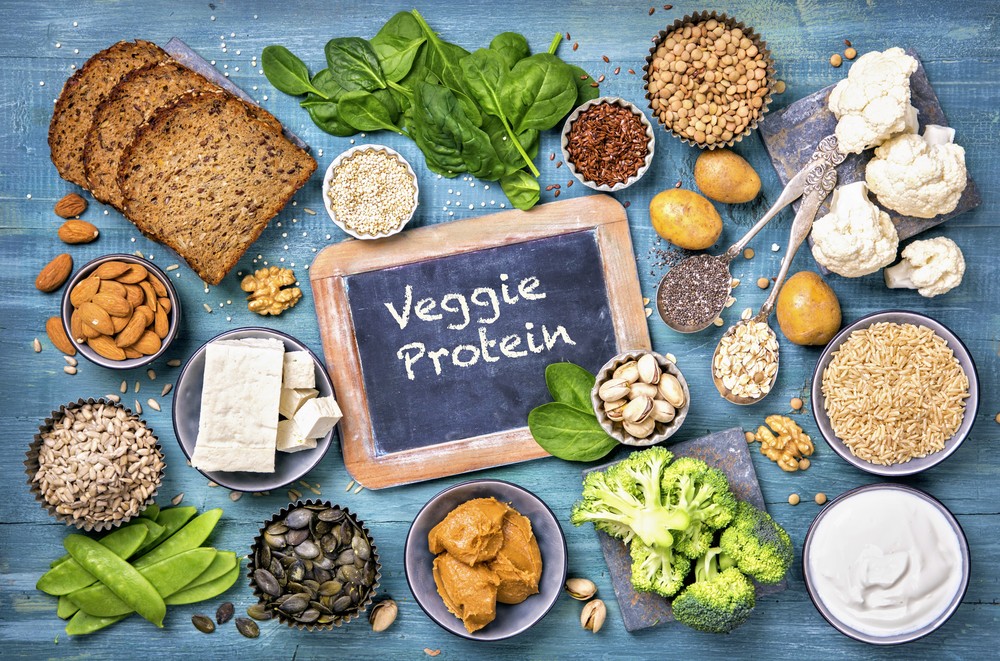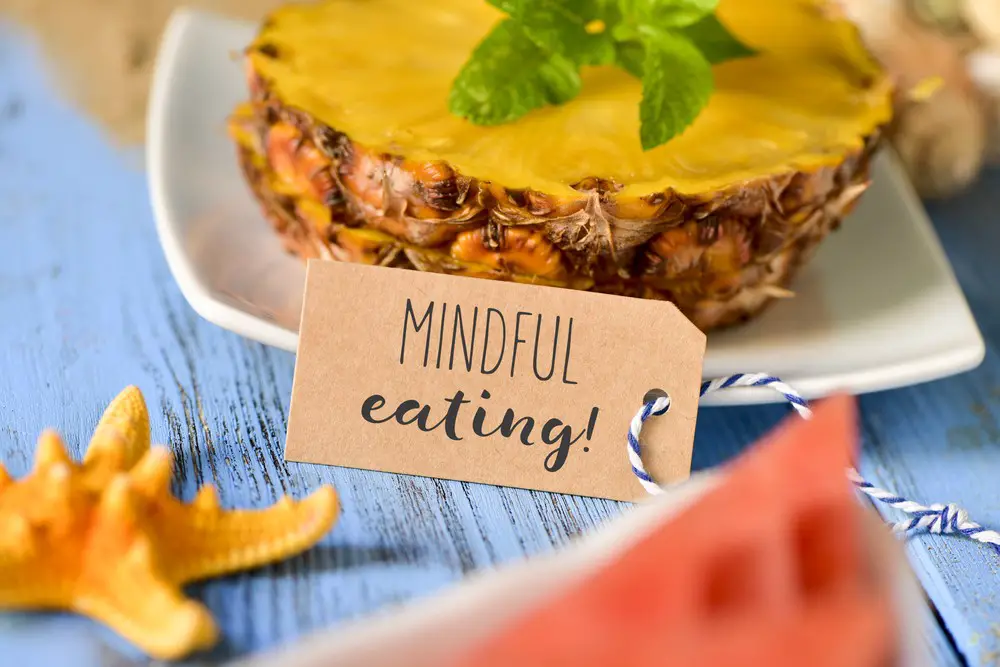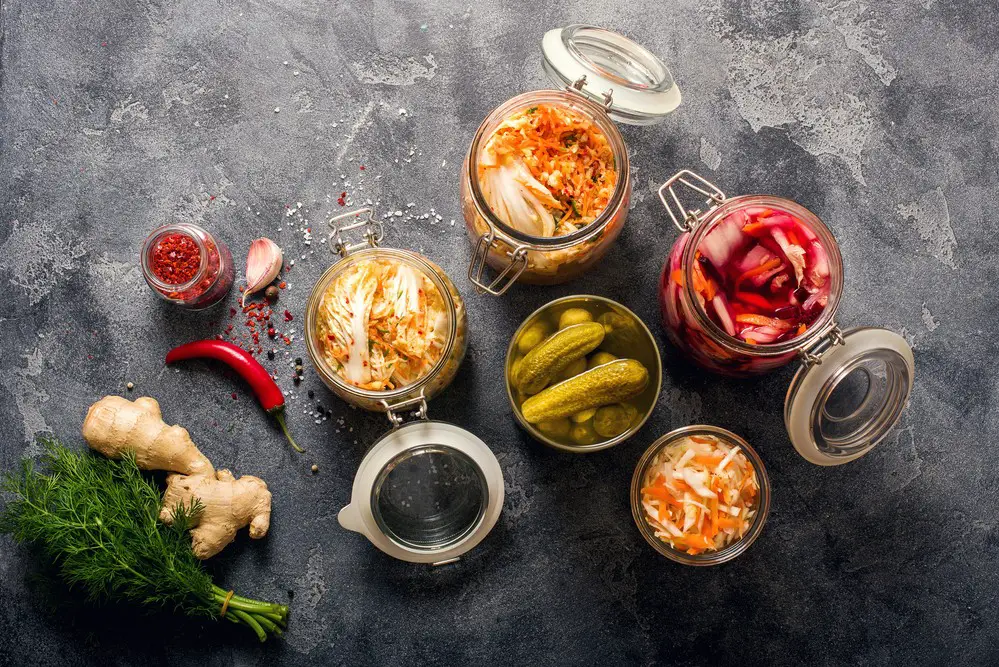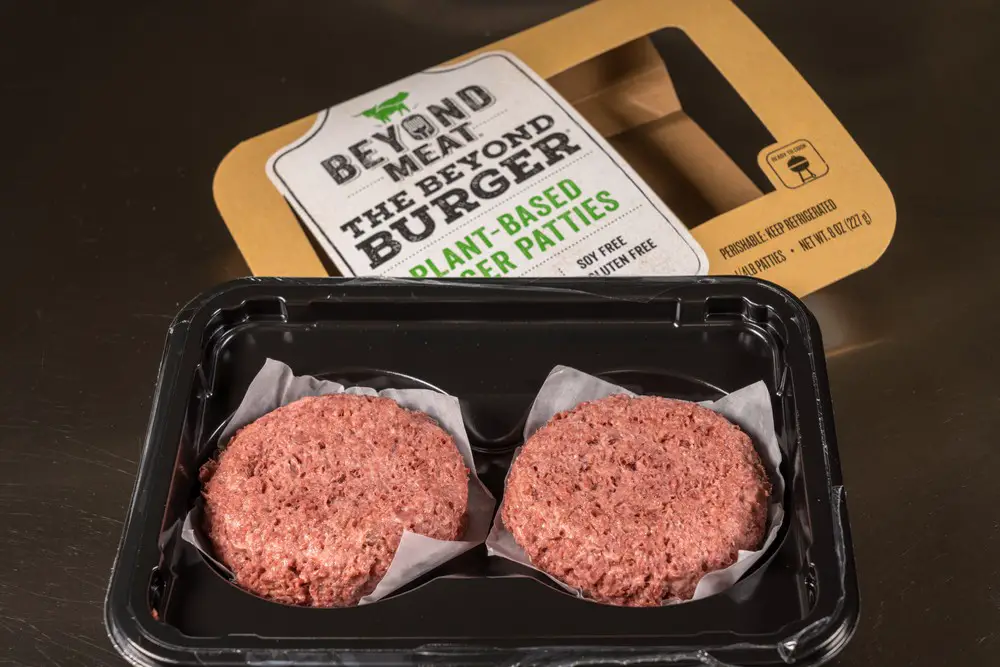A plant-based diet includes many fruits, vegetables, legumes, whole grains, nuts, and seeds. However, not all plant-based diets are the same. People who follow a Mediterranean-style or flexitarian diet sometimes include lean meats, fish, seafood, eggs, and dairy but focus primarily on plant-based meals.
Vegetarians eat no fish, seafood, meat, or poultry but include dairy products or eggs in their mainly plant-based diet. Vegans don’t include any animal-based products in their diet, including honey.
Even though experts agree that plant-based diets have many benefits because they reduce mortality rates from several causes, including heart, cardiovascular, and other chronic diseases, plant-based diets have potential drawbacks. What are the negatives of a plant-based diet? The only way to find out is to examine the considerations closely.

Potential Nutrient Deficiencies
You can be very healthy on most plant-based diets if you plan your meals properly to include all the nutrients your body requires. However, it’s essential to know what are the negatives of a plant-based diet? These include not getting enough protein, vitamins, and minerals.
Getting Enough Protein
 Even though protein is more abundant in meat, you don’t need meat to be strong. Protein intake combined with exercise will ensure strength. Several foods can provide proteins on a plant-based diet. These include tofu, beans, lentils, whole grains, seeds, and nuts.
Even though protein is more abundant in meat, you don’t need meat to be strong. Protein intake combined with exercise will ensure strength. Several foods can provide proteins on a plant-based diet. These include tofu, beans, lentils, whole grains, seeds, and nuts.
Therefore, you must pay extra attention to the foods you put on your plate, especially if you follow a strictly vegan diet. It’s crucial to add variety to each meal by including protein-rich ingredients, which is challenging when eating on the go.
Getting Enough Essential Nutrients
A well-planned plant-based diet should include carbs. Make sure they are less refined. However, it may often lack essential nutrients because some vitamins and minerals are less abundant in plant sources than in animal products.
Calcium – The most essential mineral that comes to mind is calcium, which plays a vital role in protecting our bones. It’s found in dairy products and is difficult to replace with a plant-based diet. However, leafy green vegetables and tofu are high in calcium, so include them in foods. Add foods fortified with calcium to meal times, like orange juice, plant milk, and cereals.
Vitamin B12 – An essential B vitamin that protects against anemia and nerve damage, Vitamin B12 is present in various animal products. However, it’s not freely available in plant sources. Include nutritional yeast and fortified soy milk in a vegan diet to get more of it.
Iron- Even though plants contain iron, it’s non-heme, meaning it’s not as readily available to the body as the heme iron found in meat. However, people on plant-based diets rarely suffer from iron deficiencies because spinach, beans, and raisins are excellent sources.
Vitamin D – People on a strictly vegan diet often find it challenging to get enough vitamin D because it’s only available in fatty fish and fortified dairy milk. You can get vitamin D from mushrooms treated with UV light and fortified cereals and juices. However, if you struggle to get enough vitamin D, ask your healthcare professional for a supplement.
Iodine – Vegans don’t eat fish or dairy products, meaning they may have a low intake of iodine. However, they can eat seaweed to increase their intake or take a supplement.
Omega-3s – These fatty acids in fish promote healthy skin, hair, and nails. Some good plant sources of Omega-3s include flaxseeds and flaxseed oil, walnuts, and canola oil.
Looking at the above content on proteins, minerals, and vitamins, it’s evident that you can counter any negatives by planning your day and preparing meals, especially when packing snacks to eat during the day. When eating out, choose restaurants that offer complete, plant-based meals with a balance of nutrients.
Digestive Issues
What are the negatives of a plant-based diet? So far, we have gleaned that even though plant-based diets have limited food options, they are healthy if you get enough proteins, minerals, and vitamins.
Unfortunately, for some people, digestive issues often accompany a vegan diet. These include gas, bloating, heartburn, and an upset stomach.
Why does eating plant-based foods cause bloating? Occasional bloating affects nearly a quarter of the population, but it increases in people on plant-based diets because of the increased intake of plant fibers to supplement meats.
All the foods forming part of a plant-based diet include plenty of dietary fiber. Dietary fiber passes intact through the digestive system, providing several benefits, like lowering LDL cholesterol (the bad one), maintaining healthier bowels, controlling blood sugar levels, and increasing longevity.
Cruciferous vegetables tend to cause more bloating because they contain raffinose, an oligosaccharide. It first needs to be fermented by bacteria in the large intestine before digestion, producing gas.
Digestive issues can cause bloating, but in general, when caused by changing to a plant-based diet, you should decrease the amounts you eat of the culprits as the body adapts. If you don’t have medical reasons for digestive issues, you can manage bloating in several ways:
Slow and Mindful Eating
 Slow eating has several benefits. These include savoring every bite, boosting fullness hormones, and less bloating. Eating faster means you can swallow more air, causing bloating.
Slow eating has several benefits. These include savoring every bite, boosting fullness hormones, and less bloating. Eating faster means you can swallow more air, causing bloating.
Being mindful entails determining what you eat. Stephanie Wells, RDN, offers this advice in VegNews. “ Rather, introduce high-fiber foods gradually, starting with smaller amounts of cruciferous vegetables and beans.” She adds, “Lentils tend to cause less gas in some people than beans, and tofu and tempeh are easier to digest.”
Prefer Ancient Grains
Gluten, a protein found in wheat, causes digestive distress in many people because it contains two proteins – glutenin and gliadin. These create tiny bubbles that can cause abdominal pain. Going gluten-free for a while can help you see if you are intolerant to gluten.
Ancient grains perfectly replace wheat since most people tolerate them well. These include amaranth and quinoa.
Drink More Water
The more significant amounts of fiber consumed on plant-based diets require that you drink more water to help flush out soluble fibers from the intestine quickly. Water also speeds up the exit of insoluble fiber from the gut. Drinking enough water will help with digestion, but ensure it’s always available by drinking water throughout the day and not only at mealtimes. Men need about 3.7 liters and women 2.7 daily.
Soak Legumes
Legumes have a high fiber and protein content, making them invaluable to plant-based diets. Unfortunately, the fiber in them tends to cause bloating and gas. Soak all legumes overnight to soak out the sugars, eliminating the chances of digestive issues.
Cooking Vegetables
Boiling or steaming might leach some vitamins from your vegetables, but it breaks down the fiber. When starting a plant-based diet, cook vegetables to prevent any initial tummy troubles. However, don’t overcook them; otherwise, they will lose their valuable nutrients and become tasteless.
Go For a Walk
Take a short walk, do chores around the house, or practice light exercises after eating to help reduce bloating and gas. Please don’t overdo it because your body is busy digesting your meal.
Eat Probiotics

Our intestines contain bacteria, many of which are beneficial to digestion. Low levels of these healthy bacteria cause increased gas, diarrhea, and constipation. Counter this by eating fermented foods that contain probiotics that replenish bacteria stores. These foods include sauerkraut, kombucha, kimchi, tempeh, and miso.
Go Easy on These Culprits
Processed foods, fast foods, sugar (including sugar alternatives), salt, carbonated drinks, and fat can all cause gas and bloating. Therefore, limiting or eliminating them from your diet is best.
Lack of Variety
Following a plant-based diet isn’t easy. What are the negatives of a plant-based diet?
Firstly, you have to give up foods you enjoy and have a smaller variety of foods to choose from. Also, it’s often difficult to find meals in a restaurant, and one must give up traditional foods at upcoming celebrations and social occasions. Finally, plant-based foods can often prove expensive.
However, careful meal planning and shopping can ensure that you include a variety of delicious and nutritional plant-based foods into your diet at a reasonable cost.
Use all the plant-based ingredients available to you and integrate these into the cuisines you love. Create delicious curries with lentils or chickpeas, make a vegan pie, make dips with vegetables and spices, or make interesting stir-fries of poke bowls with grains and vegetables, spicing them up with exciting sauces.
If you are busy and often rely on ready meals, look for plant-based convenience meals to reheat burgers, sausages, lasagnas, etc. If you are vegan, read the labels to ensure the ingredients in these prepared foods meet your dietary choices. Read more about plant-based labeling in this article on the Pros and Cons of a Plant-Based Diet from Plant-Based with Amy.
However, choosing a plant-based diet of highly processed foods won’t have the same health benefits as one based on whole foods. Therefore, don’t let the lack of variety lead you to eat too many processed foods since these increase your risk of chronic health problems.
Social Challenges
An article on “What are the negatives of a plant-based diet” cannot omit to mention the social challenges faced by those who choose this alternative.
In many cultures, meat plays a significant role in how people are perceived within their communities. As a matter of fact, in some cultures, eating meat proves masculinity and social status.
Traditional diets across the world, except some, often include meats. Interestingly, India has the lowest rate of meat consumption globally, with Greenpeace quoting research that estimates more than 400 million people there identify as vegetarian.
In many regions, the lack of availability and high costs of plant-based foods make it difficult for people to include them substantially in their diets. Governments can overcome these social challenges by encouraging people to consume plant-based foods and to improve access to these by encouraging the support of local farmers and businesses.
Finally, meeting the social challenges requires accepting people making different dietary choices. People opting for a plant-based diet must have access to affordable farm-grown produce. Socially, they also need to feel that their family, friends, and restaurants respect their dietary wishes, providing them with options and variety.
Guide to Overcoming the Drawbacks of a Plant-Based Diet
Now that we’ve explored the challenges of adopting a plant-based diet let’s pivot toward solutions and strategies to overcome these obstacles. Embracing a plant-based lifestyle can be incredibly rewarding, and with the right approach, you can minimize its drawbacks while maximizing its benefits.
Nutrient Deficiencies: Planning and Supplementation
- Meal Planning: Invest time learning about nutrient-rich plant foods and plan your meals to include various options. This ensures a balanced intake of proteins, vitamins, and minerals.
- Supplements: Consider supplements for nutrients hard to obtain from a plant-based diet, such as Vitamin B12, Vitamin D, and Omega-3 fatty acids. Always consult a healthcare professional before starting any supplement regimen.
Digestive Comfort: Gradual Changes and Digestive Aids
- Gradual Transition: Introduce high-fiber foods slowly to your diet to allow your digestive system to adjust, reducing the likelihood of discomfort.
- Digestive Aids: Incorporate digestive aids like probiotics found in fermented foods, and don’t forget to stay hydrated. Cooking methods that make food more accessible to digest, such as steaming or boiling, can also be beneficial.
Ensuring Variety: Creative Cooking and Exploration
- Explore New Foods: Regularly introduce new plant-based foods to your diet to keep things interesting and increase the range of nutrients you consume.
- Cooking Classes and Recipes: Experiment with cooking classes or online tutorials to learn how to prepare various delicious plant-based dishes. This can make mealtime exciting and something to look forward to.
Social Challenges: Communication and Advocacy
- Open Dialogue: Communicate your dietary choices clearly and positively with friends and family to encourage understanding and support.
- Find Community: Seek out plant-based groups or communities online and offline for support, recipe sharing, and dining recommendations.
Budget-friendly Tips: Smart Shopping and Meal Prep
- Bulk Buying and Seasonal Shopping: Purchase whole grains, legumes, and nuts in bulk, and buy fruits and vegetables in season to save money.
- Meal Prep: Preparing meals in advance can save time and ensure that you have healthy plant-based options readily available, reducing the temptation to purchase more expensive convenience foods.
Dining Out: Research and Flexibility
- Restaurant Research: Look up plant-based friendly restaurants or menu options before going out to ensure some choices align with your dietary preferences.
- Flexibility: When options are limited, look for dishes that can be easily modified to fit a plant-based diet.
Final Thoughts
Switching to a plant-based diet comes with its set of challenges, but with careful planning and a bit of creativity, these hurdles can be easily overcome. Remember, the goal is not perfection but progress toward a healthier, more sustainable diet that aligns with your values and lifestyle. Embrace the journey with an open mind and a willingness to learn, and you’ll find that the benefits far outweigh the challenges.
By following these tips and keeping informed, you’ll not only navigate the plant-based lifestyle more smoothly but also enjoy its myriad benefits for your health, the environment, and animal welfare.

